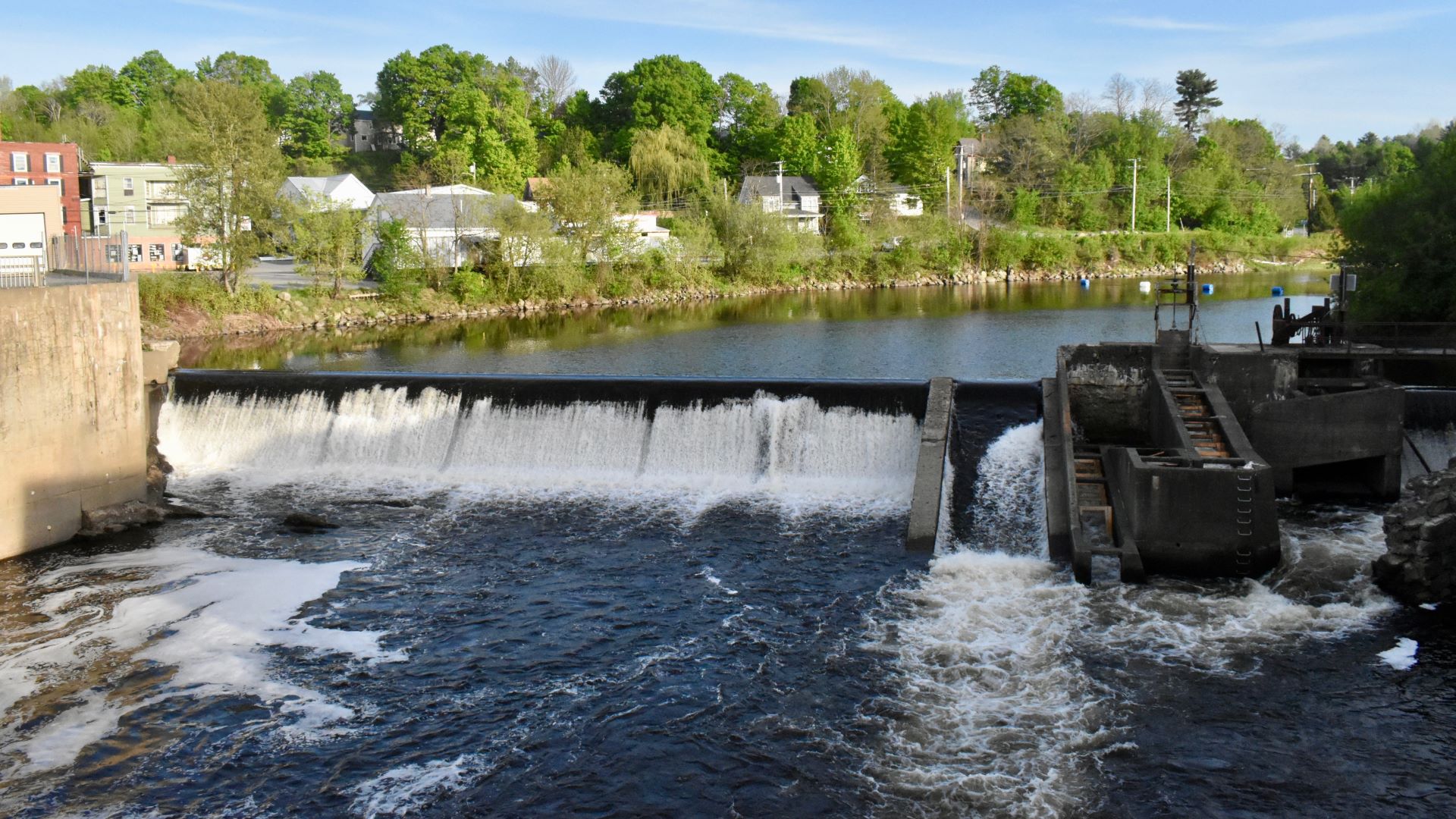Dover-Foxcroft voters elected Tuesday to maintain the town’s dam on the Piscatquis River and forgo plans for its removal, ending one of the most immediate paths to removing the deteriorating structure and instead obligating the town to spend millions on repairs.
The decision was more than a year in the making and necessitated by the Mayo Mill Dam’s years-long noncompliance with federal standards.
Residents were given the option to authorize a town plan to remove the dam (paid with grant funding and collaboration with environmental nonprofits) or reject the plan and spend upwards of $8 million or more on restoration and a new fish passway.
The ballot item authorizing removal lost, 558 votes to 411.
Whereas officials projected that much of the $6.3 million required for removal would have come from grants and support from nonprofits, costs to maintain the dam and construct the new fishway will likely be borne by the town alone — potentially requiring a property tax increase.
The willingness of pro-dam advocates for the town to shoulder those costs and find necessary alternative funding sources demonstrates how beloved the dam is, as well as its influence on the Piscataquis River.
Pro-dam advocates put up signs encouraging a “No” vote on the ballot item to “Save the Piscataquis,” referring to the influence dam removal would have on water levels. The levels behind the dam are artificially raised and form a pond-like impoundment in the heart of downtown, used by boaters as well as the occasional seaplane as a landing strip.
Studies conducted by town-contracted engineering firms project that dam removal would narrow the river behind the dam and lower its depth. Removal would also provide “safe, timely and effective fish passage” and the largest gains in reducing flood risk, which is heightened by climate change and the dam’s current form.
The issue drove roughly 35% of registered Dover-Foxcroft voters to cast ballots, significantly higher than the 25% turnout the town typically sees during June municipal elections, according to town select board chair Tom Lizotte.
Lizotte, a staunch advocate for removal, said he wasn’t surprised by the results because of the dam’s entrenchment in Dover-Foxcroft’s downtown and residents’ hearts.
“It’s right in the middle of our community and that’s what people have known,” Lizotte said.
He and the select board voted for removal earlier this year, and held public hearings to discuss the findings of a recent study with residents.
Many attendees voiced opposition to removal and encouraged the town to pursue other options, like retrofitting the dam to produce hydroelectricity (which it hasn’t done since 2008) and finding similar grants for removal, but to maintain the dam.
Staff members with The Nature Conservancy, Atlantic Salmon Federation and engineering firms all maintained dam removal was the most cost-effective option; and grants don’t exist for repairing a failing dam.
In a joint statement, the two organizations said although they were disappointed, they “respect the process for making this decision established by the Town of Dover-Foxcroft, and the thoughtful analysis and leadership of so many people in town…”
Lizotte said the select board has to certify the results and hastily move to contract an engineering firm to create plans for restoring the dam, and hire a project manager to oversee the technical process.
“We’re already years out of compliance with (the Federal Energy Regulatory Commission) over the condition of the dam,” Lizotte said. “We need to come up with a plan and we need engineering help to do that … The voters have spoken their choice.”







